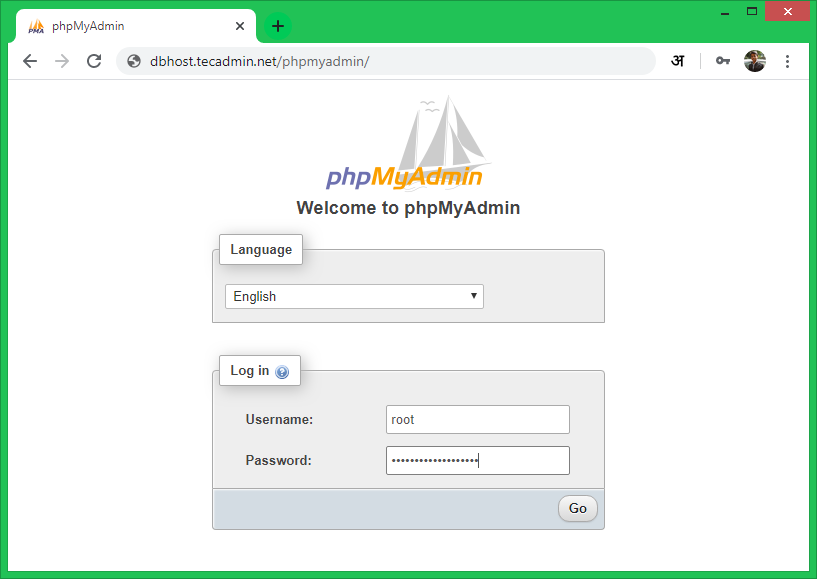
Http(s)://your_domain_or_ip_address/phpmyadminĭon’t forget to enter your IP address (or domain name).Įnter the username and password and click on Go. Enter the following command on your web browser. Now that the server is up and running, you can access the web user interface through the web browser. Step 2: Accessing the phpMyAdmin web interface The tutorial's next part is connecting to the phpMyadmin web interface.

With that, our phpMyAdmin installation is now operational. Restart the PHP processor and Nginx so that the changes made will come into effect: Sudo ln -s /usr/share/phpMyAdmin /usr/share/nginx/html This needs to be done so that the Nginx web server can correctly find and serve the phpMyAdmin files. Once the installation is complete, we must create a symbolic link between the installation files and our Nginx document.

This is crucial for the tutorial to proceed further. Now, we can go ahead and install phpMyAdmin.īefore running this command, be sure that you have Nginx and PHP 7 installed on your system. To install EPEL, enter the following command: Since it’s unavailable from the CentOS default repository, we will download the EPEL repository. Now that we have access to the server via SSH and the server is equipped with the LEMP stack let’s install phpMyAdmin. Access to the root user or a user with Sudo privileges.LEMP is installed on your CentOS server.Prerequisitesīefore we get started, you will need the following:
#CENTOSPHPMYADMIN HOW TO#
This tutorial will show you how to install phpMyAdmin with Nginx on CentOS 7. While you can interact directly with the system console from the MySQL prompt, having a GUI is preferred by many database administrators. PHPMyAdmin is a web-based GUI (graphical user interface) that allows administrators to create, store and edit databases created with MySQL.

List of content you will read in this article:


 0 kommentar(er)
0 kommentar(er)
